I’ve bought and sold maybe 20 motorcycles in my life. Most of those in the last five years. So I’ve heard every single ridiculous strategy on how to negotiate motorcycle prices — and tried a few myself.
Anyone who’s sold a motorbike before knows about people who
- Try to lowball. You list for $6K and they say “Would you accept $3K cash today?” (Why do they say “cash”? I don’t offer credit…)
- Give you some lame reason. “It’s not a very popular model/it’s highly modified, so can you accept xyz?” Not my problem.
- Ask you to negotiate against yourself. “What’s the lowest you’ll take?” This is the worst one. This is such a lazy question I never respond.
There are tons of other dubious and stupid negotiation strategies. I’m sure the people who use these are the same ones who say “hey” on Tinder. It must work sometimes.
If this is you: own it. Be better.
But I have good news: There are definitely better ways to negotiate down a price. I’ve used these strategies and they work. They work for motorcycles, cars, rental properties, and other things.
Are you obsessed with motorcycles?
Well, I am. That’s why I created this site — as an outlet. I love learning and sharing what others might find useful. If you like what you read here, and you’re a fraction as obsessed as I am, you might like to know when I’ve published more. (Check the latest for an idea of what you’ll see.)
How to negotiate motorcycle prices the smart way — Summary
Here are the four rules for negotiating down a motorcycle’s price.
They’re not the most aggressive strategies, and professional buyers would run rings around me… but these are things that I do, that are comfortable for a non-professinoal, and that generally work for me.
- Be early. Respond right away. Heck, be immediate if you can.
- Ask questions that makes the seller feel good and shows interest. This is a question you know they can give an answer to that doesn’t make them look bad. “Those tyres look fresh, are they new?”. Ask for the VIN so you can do a background check — always shows interest (it costs you money in some parts of the world).
- Call on the phone. Ask some questions, introduce yourself, talk about the bike. Set a time to meet, if all goes well.
- Lead into the offer gently. Set the scene, and be nice about it.
And a caveat — you don’t have to make offers in person. Even if they insist that’s the only way.
Be early — Respond to an ad right away.
If you want to negotiate motorcycle prices against the owner and not other people, then respond early.
Just because you’ve responded to an ad doesn’t mean you’re leading them on. You’re now one of their “leads”.
Sometimes I’ve had sellers contact me weeks after asking if I had bought a bike yet. They had met me and wanted to make me a lower offer.
If you get your foot in the door early, if someone else offers them a lower price, the seller might make that offer to you first.
And if you don’t buy the bike, that’s OK. For every bike I sell, usually 5-10 people contact me.
Ask questions that make the seller look good and display interest.
Too often, a buyer will ask me a question like “Does it have Ohlins suspension?” or “Why the high KMs?”
To me, this doesn’t show they’re interested in negotiating motorcycle prices. It usually shows that they’re leading up to a lazy lowball offer.
In the courtroom (I studied law once), to butter up a witness and get them to talk themselves into a corner, you first ask them questions that make them seem good. “You’re an honest person, right? You try to do the right thing?”
We’re not trying to bully a seller, but we do want them to feel good. When they feel good, they are more inclined to talk to you and maybe give you something.
Some questions you can ask are
- “It looks well maintained — do you have a shop you go to or do you do your own service?” (either answer is good!)
- “Are those tyres fresh? They look so new”
- “This thing is a classic — Why are you selling it and not holding on to it??”
All those questions are rhetorical (the answer doesn’t matter) but they put the seller in your court and build rapport. Later if you ask for something they may give it to you easily.
Call on the phone.
One of the best ways to negotiate motorcycle prices is to call on the phone.
Email responses are lazy. So are text messages, though at least they give a contact number.
It’s super rare for someone to just call another person and talk to them. To the point that when someone does, it signals to me (as a seller) there’s a 50% chance they’re actually going to buy the motorbike I’m selling!
Calling on the phone lets you say: “Hey. I’m a serious buyer. I’m not some random person. I know this motorbike, I know motorbikes, I’m a lucid and intelligent person and I’ll treat you like an adult.”
Sending text messages lets people hide behind a veil of relative anonymity and say dismissive and sometimes rude things.
As a buyer, talking to someone on the phone lets you gauge the seller, too. Are they a lucid, smart-sounding person? Are they honest?
Assessing the seller is a dark art in itself but there’s no better way than doing it in person. Second to that — on the phone.
Lead into the offer gently.
Occasionally I’ve made what would be considered a “low-ball” offer: offering $6,000 for a motorbike listed as $7,750, for example.
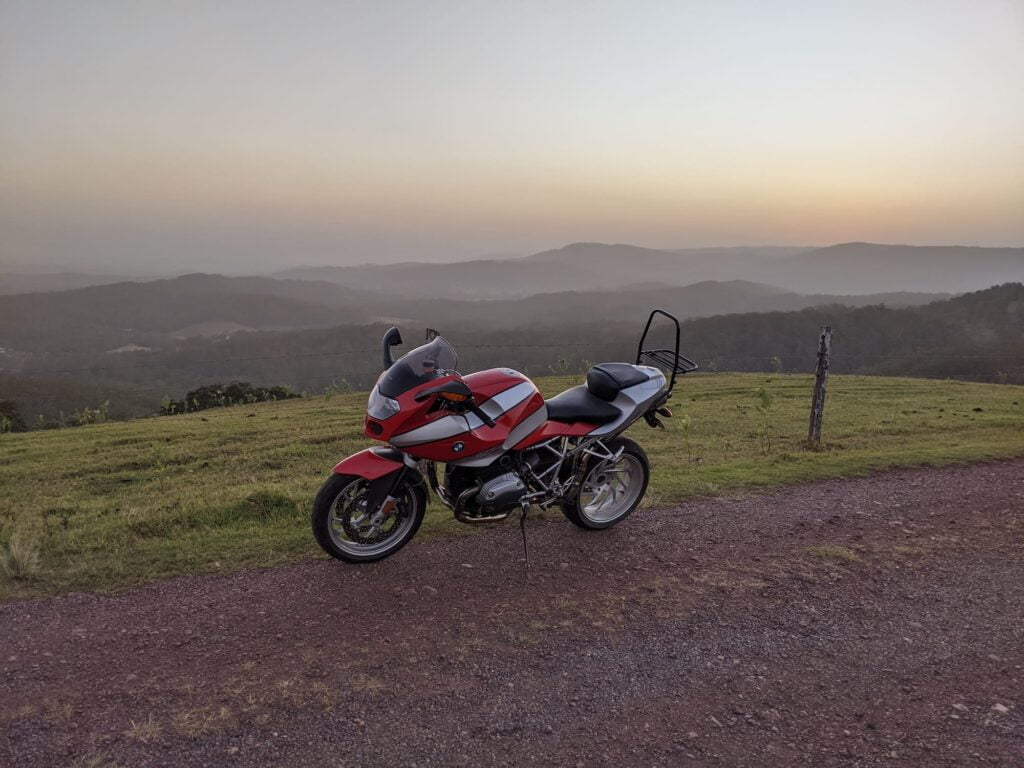
I didn’t do this out of the blue. Here was what I did when I wanted to negotiate the motorcycle price of a BMW R1200S I bought in late 2019 (and have now sold):
- Message 1: “Hi, great bike. I’m just researching these and have a few questions. Is that really the original paint? And the wheels too? It looks so clean.”
- Message 2: “A few more questions: when was the last service? Has the alternator belt been changed? And how many kms on those tires?”
- (A couple more messages about logistics)
After that, the seller has been warmed up. I’m not just some jamoke; I know the bike and am considering what to do to get it.
Then I led in with my warm-up to the offer.
“Look, I really like the bike, but I want to make you an offer. Just a warning, it’s a bit off from what you’ve listed it for. It’s just that $7,750 gets you a lot of bike these days, and I’m weighing up my options.”
Sometimes a seller will say they’re not interested, and you should go for one of your other options. That’s fine.
But sometimes they’ll say “Let me know what you’re thinking.” You make an offer. Worst case — they’ll say “no”, but usually they’ll counter with what they can accept.
If I made that offer off the bat they probably wouldn’t have responded. But they’ll negotiate with someone who’s serious.
Note: You don’t have to make offers in person
Some sellers say they’ll only accept offers in person. This is really a way of saying: they’ll only accept offers from serious buyers. They don’t want to negotiate motorcycle prices with randoms.
Sometimes making an offer in person is impractical. If a bike is within 20 minutes drive — sure. But sometimes I’m making an offer on a bike that’s 2 hours away. I don’t negotiate in person after having driven a truck for two hours — unless I find something really wrong in person. I negotiated the price of a Ducati Supersport 900 like this, picking it up from quite far away (with thanks to my family!).
So if you want to be sure of a price, then find out everything you can about a bike, and say “look, I know you don’t want offers other than in person, but I’m two hours away and so I wanted to see if we could arrange something now”. If the seller doesn’t accept that, then they’re probably not someone you really want to talk to.

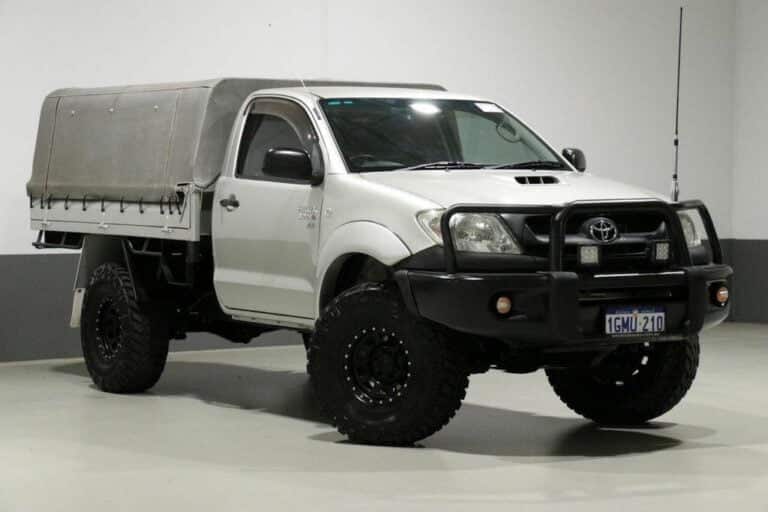

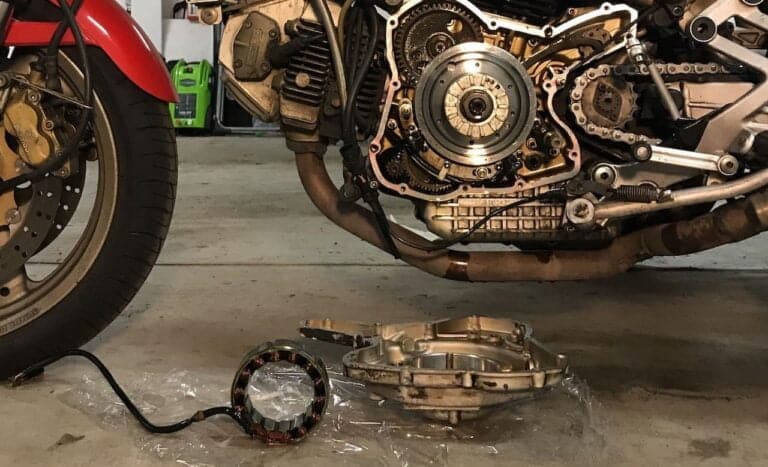
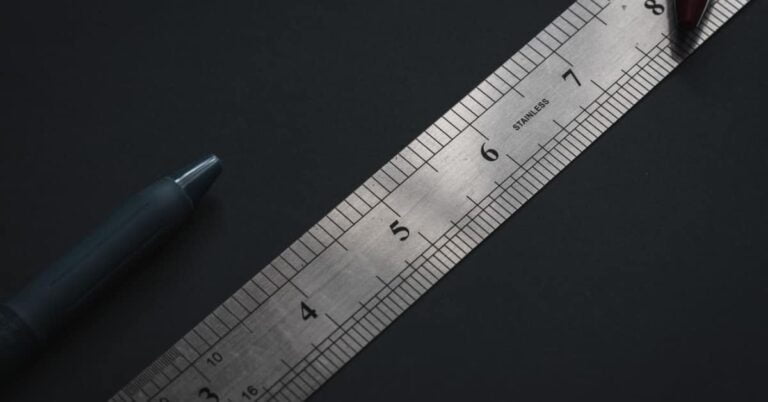
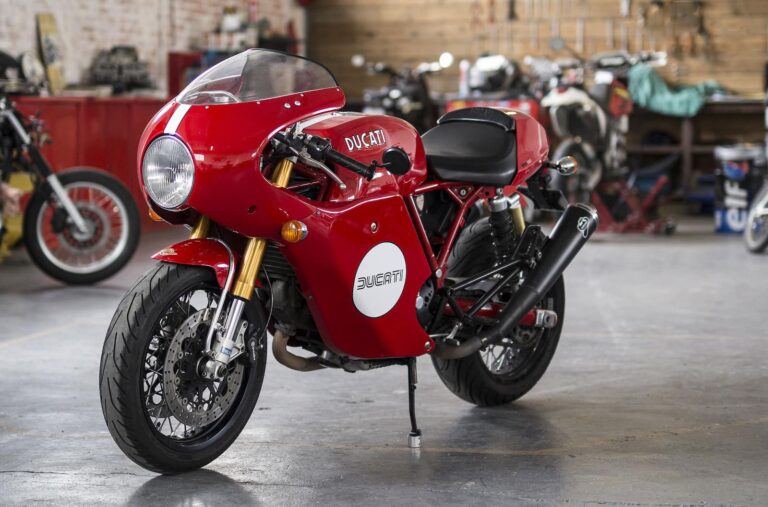
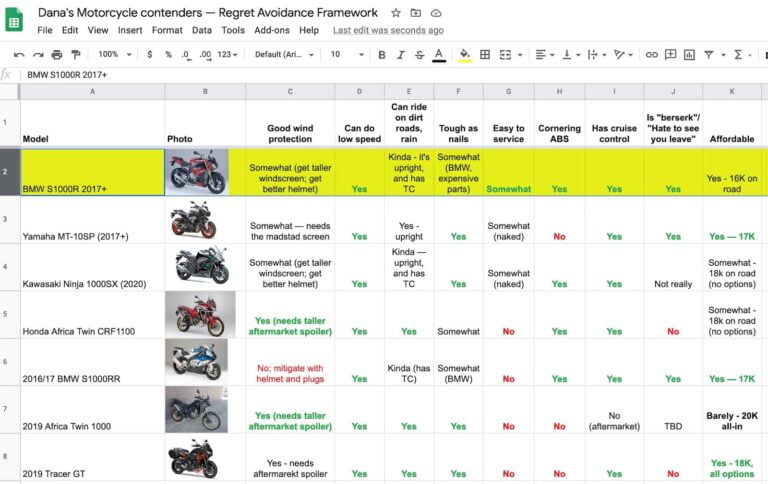
My cousin Leon would like to buy a motorcycle that he may use for his current sport, which is why we have decided to start looking for a Harley Davidson motorcycle. Well, I guess you’re right that he must check his prospective ride’s tires and other components before making any final decisions. Thank you for also sharing here that she may try negotiating the price through the phone.
Rando: what’s the lowest price you would accept?
Me: $1 less by text, $100 less by phone, and a whole lot less in person.
This is a good summary.
I’m not sure if it’s only me, but I usually have to travel at least 4 hours and mostly more for the bikes I’m interested in. I haven’t found this to be a problem though as I’m usually the only person to have checked the bike out. Also, I prefer to negotiate in person while looking at the bike and owner. Cheers, Love the blog 🙂
Helpful article. Thank you.
I’m looking to buy a new bike and noticed some 2021 models are marked down quite about. Like 15%.
They obviously need to move the old models but it got me wondering how much markup does a new motorcycle usually have? Said another way, how much negotiating room does the dealer have? (I’m primarily looking at BMW, Triumph and KTM).
Those markdowns sometimes come from the brands themselves as rebates to the dealers to move old inventory.
I don’t know about new models/old inventory, but for used ones, dealers I know tend to make me offers and very transparently say they’ll sell it for $3K more (after all, the ads are public, and they can’t come across as sharks). These are bikes in the $10-20K range. For bikes above that, I suppose margin might increase to $4 or 5K.
I personally think a markup of less than $2K would be very hard to manage. And $2k is a reasonable expense when it compares to the time it saves me dealing with inspections and offers.
Look at it another way — if you really want to get your money’s worth out of a dealer, make it clear you want to buy but want to buy the right bike, and take a few bikes out for test rides. That’s what they’re there for, and it’s much easier than with individuals.
This article is a bit naïve and way too passive.
Buying a used motorcycle is a business, we’re talking about a commodity, a luxury, a toy in essence.
The term ‘buyer beware’ points to a sellers (all sellers), dishonesty in concealing certain things on purpose just to get rid of the bike they no longer want for what ever the reason at all costs, this is the case with all sellers, it’s just a matter of the level of severity.
Being it is business you must ask hard, straight questions as any used bike is a big financial investment and you must protect yourself if purchased.
Politeness is fine but you must know what you are buying and looking at, most sellers are not going to admit to you without you asking about the bikes flaws, most sellers deceptively do not want you to know about them because it devalues drastically away to the sellers asking price.
A clean, close to immaculate bike shows an owner who most likely took care of the bike.
A buyer must research beforehand the make, model and color they want and do not deviate from that, this way they are getting exactly what you want and not just compromising, if you don’t, you will be sorry later on.
Tires and the bikes overall condition and past up keep is optimum, if a bike needs tires (5 years old or more), even if the seller tries to convince you they are fine, you will have to financially invest in a new set probably sooner than later, it’s not worth the risk.
If a bike brand/model has a reputation for having defective factory parts like with Big Dog choppers for instance, that makes the bike a liability unless the current owner has fixed all the known issues and can prove it, that is more money you will have to add to the price of the bike to make the bike reliable and trustworthy on the road.
Time is always on a buyers side especially with the fall and winter months on the horizon, you must have patients and check daily on the classifieds as new bikes come on the market every day…
Thanks Dave, I always have much to learn. I know a few people who do it professionally and they run rings around me. Sounds like you’ve been in it a while!